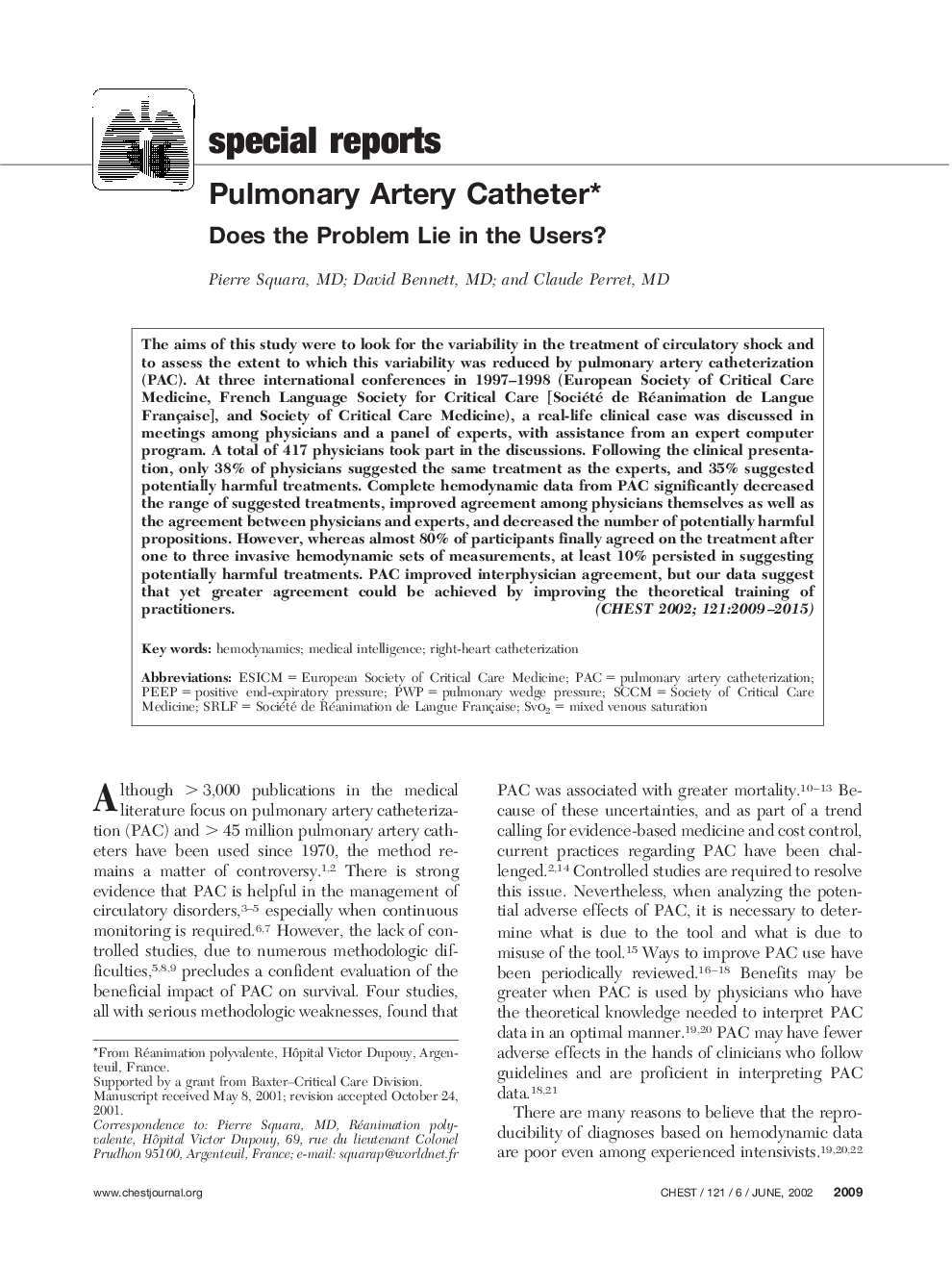| Article ID | Journal | Published Year | Pages | File Type |
|---|---|---|---|---|
| 2906822 | Chest | 2015 | 7 Pages |
The aims of this study were to look for the variability in the treatment of circulatory shock and to assess the extent to which this variability was reduced by pulmonary artery catheterization (PAC). At three international conferences in 1997–1998 (European Society of Critical Care Medicine, French Language Society for Critical Care [Société de Réanimation de Langue Française], and Society of Critical Care Medicine), a real-life clinical case was discussed in meetings among physicians and a panel of experts, with assistance from an expert computer program. A total of 417 physicians took part in the discussions. Following the clinical presentation, only 38% of physicians suggested the same treatment as the experts, and 35% suggested potentially harmful treatments. Complete hemodynamic data from PAC significantly decreased the range of suggested treatments, improved agreement among physicians themselves as well as the agreement between physicians and experts, and decreased the number of potentially harmful propositions. However, whereas almost 80% of participants finally agreed on the treatment after one to three invasive hemodynamic sets of measurements, at least 10% persisted in suggesting potentially harmful treatments. PAC improved interphysician agreement, but our data suggest that yet greater agreement could be achieved by improving the theoretical training of practitioners.
